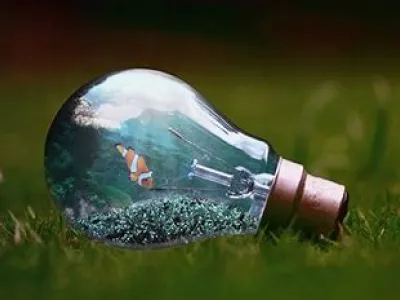The connection between water and energy
March 2, 2018

March 22 is World Water Day. Its less well known than Earth Day, but very appropriate for Minnesota. Minnesotans love water in all its forms- in lakes, rivers, wetlands or as snow! We are surrounded by it and lucky to have it in abundance, especially compared to other parts of the U.S. and the world. However, we know our water supply is not unlimited and many of our lakes and groundwater supplies are polluted or under threat of pollution.
So, you may be asking why CUB is writing a blog about water? We usually focus on energy. Well, we’re going to talk about both because there is a strong connection between water and energy and World Water Day is a great excuse to bring it up! We can’t cover anything in a short blog, so here is some food for thought- or in water terms- just a sip.
Water to Make Energy
Interestingly, it takes a lot of water to produce some types of energy. While agriculture is the largest consumer of water in the United States, the process to generate electricity withdraws the most water. Energy produced from nuclear, coal, natural gas, concentrating solar power (CSP), and geothermal sources can use large amounts of water in their cooling systems. Depending on the system type, much of the water can evaporate in the process or it be returned to the environment. (If you are interested in learning more about these processes, check out Department of Energy’s report called the Water-Energy Nexus: Challenges and Opportunities.) Hydraulic fracking, which has become very prevalent in extracting oil and natural gas from the earth requires a lot of water to be pumped into the well at a high pressure to release the oil or gas.
Energy to Use Water
On the flip side, getting water to where it needs to be and cleaning it to a level at which it can be safely used can use a lot of energy. The Environmental Protection Agency identifies several steps in the water process that require energy: extracting and conveying water, treating water, distributing water, using water, and collecting and treating wastewater. Think of all the steps, and energy, it takes to get water from its source to our taps. Add on top the additional energy it takes in our households to heat water for showers, baths, cooking, and laundry. In Minnesota, water heating typically accounts for 15% of home energy use.
Reduce Both
Given all this, it is not too surprising that on a residential level, there is usually a connection between using less water and less energy. A recent article from Radio Iowa shared that when people are encouraged to reduce their water use, they often will see a reduction in their energy bills too. From a consumer perspective, its great to reduce both- you are reducing your environmental impact and saving money at the same time.
Contact Carmen if you’re interested in celebrating World Water Day with a discussion about ways to reduce energy and water. We’re also busy booking events for April to celebrate Earth Day so don't hesitate to reach out about an event idea.